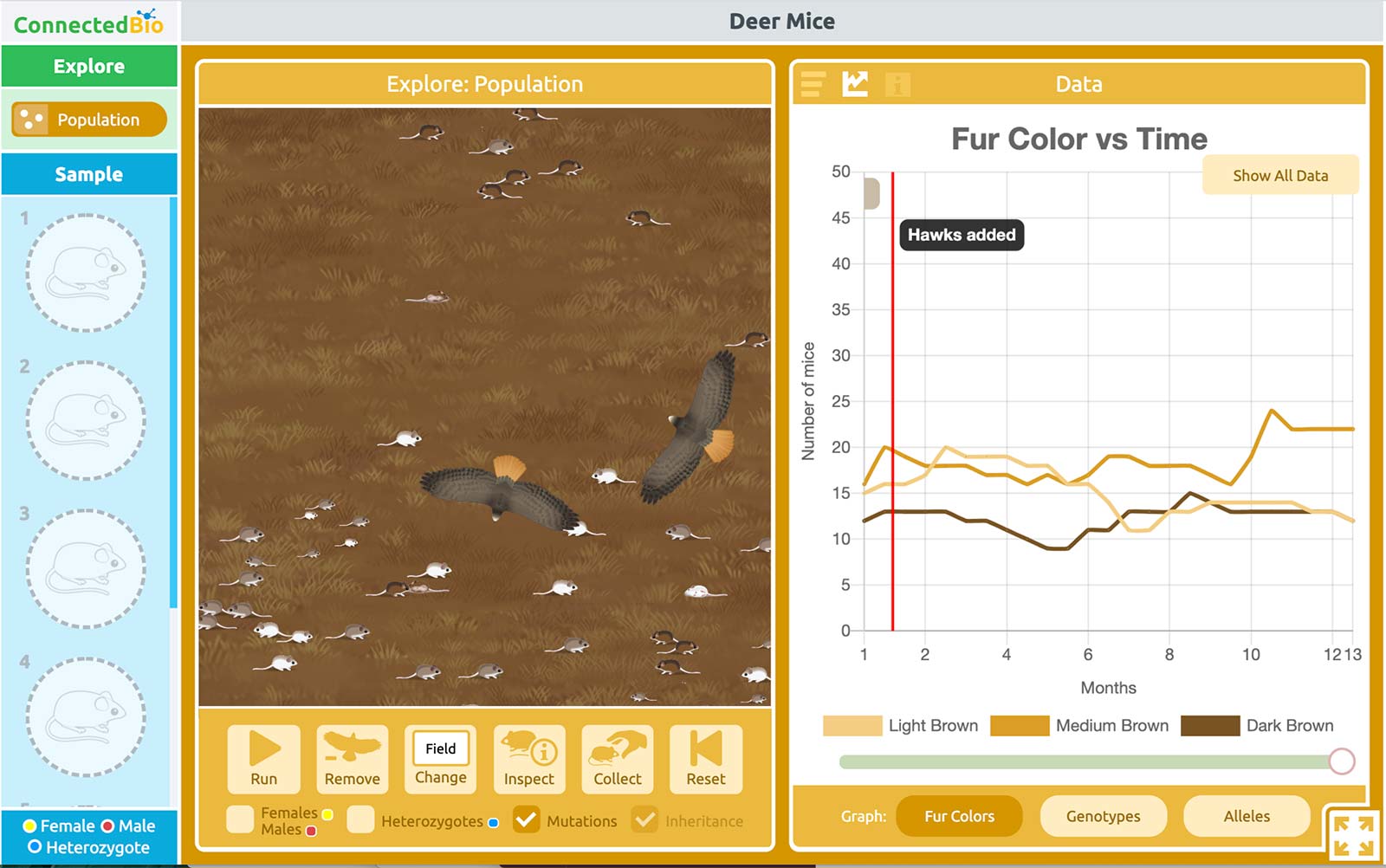

"The mice can survive by blending into their environment."
"The mouse's fur color changes, so it won't be seen and eaten by the hawk."
It's not uncommon for new biology students to talk about individual organisms “adapting to their surroundings.” They are invoking the idea that there is a need to change. But because they are focused at the organism level instead of the population level, they overlook the actual mechanisms for natural selection.
To understand adaptation in response to natural selection, students have to refocus their attention. Admittedly, this is a big job as there are several mechanisms at multiple levels: adaptation occurs at the population level while survival occurs at the organism level, and traits (which can help survival) are generated at the molecular and cellular level.
The ConnectedBio Multi-Level Simulation (MLS) allows students to explore how each biological level of scale contributes to the evolution of fur colors in the deer mouse.
Deer mice live in many different habitats across North America.In each subpopulation, their fur coloring is a good match to their habitat (Figure 1). How did this come to be?
Explore fur color of the deer mouse population
Launch the ConnectedBio MLS: short.concord.org/lm3
- Start by adjusting the various controls to become comfortable with the simulation. (Click Reset to start over.)
- Now explore a population of deer mice in two environments: beach and field.
Use the following questions to stimulate explorations and observations:
What is happening to the mice over time?
Students should notice the frequent mouse births and deaths, evidence of the many generations of mice, which is critical for recognizing that the fur color of the population changes.
How long does a mouse live?
Deer mice live about 2 or 3 years (both in the simulation and in the wild). This is another way to focus on the population and help students to see the passing of generations.
Does the fur color of the population change over time when hawks are present?
Over 5 to 10 simulated years, the population's fur color changes to match the environment (Figure 2). This observation can elicit the alternate conceptions above, and it is important to get them out in the open at this stage. Some students think that individual mice protect themselves by rolling in the dirt on fields, or that fur becomes bleached in the sun. Resist correcting them. Instead, help students investigate their ideas.
What about when hawks are not present?
Invite students to start over without hawks, tracking the data with the graph. Compare the fluctuations in fur colors to the changes when hawks were present.
What do the data tell you?
To compare any changes quantitatively, have students record their data from three trials of each experiment. This worksheet can support student data collection: short.concord.org/lm5.
Wrap up with a discussion about the fur color changing in the population over time. Remind students that offspring are not duplicates of their parents; there is natural variation. Such variation in offspring allows species to adapt to changes in the environment. To test this, use the hawks on the beach environment until all the mice have light fur, then compare with "Mutation" on vs. off. Try more levels of the ConnectedBio MLS at short.concord.org/lm0.
The ConnectedBio curriculum
The ConnectedBio curriculum helps students create a network of connected biological concepts spanning multiple scales—from the population, organism, molecular, and heredity levels—using a series of online interactive lessons.
* Bedford, N. L., & Hoekstra, H. E. (2015). The natural history of model organisms: Peromyscus mice as a model for studying natural variation. eLife, 4, e06813.